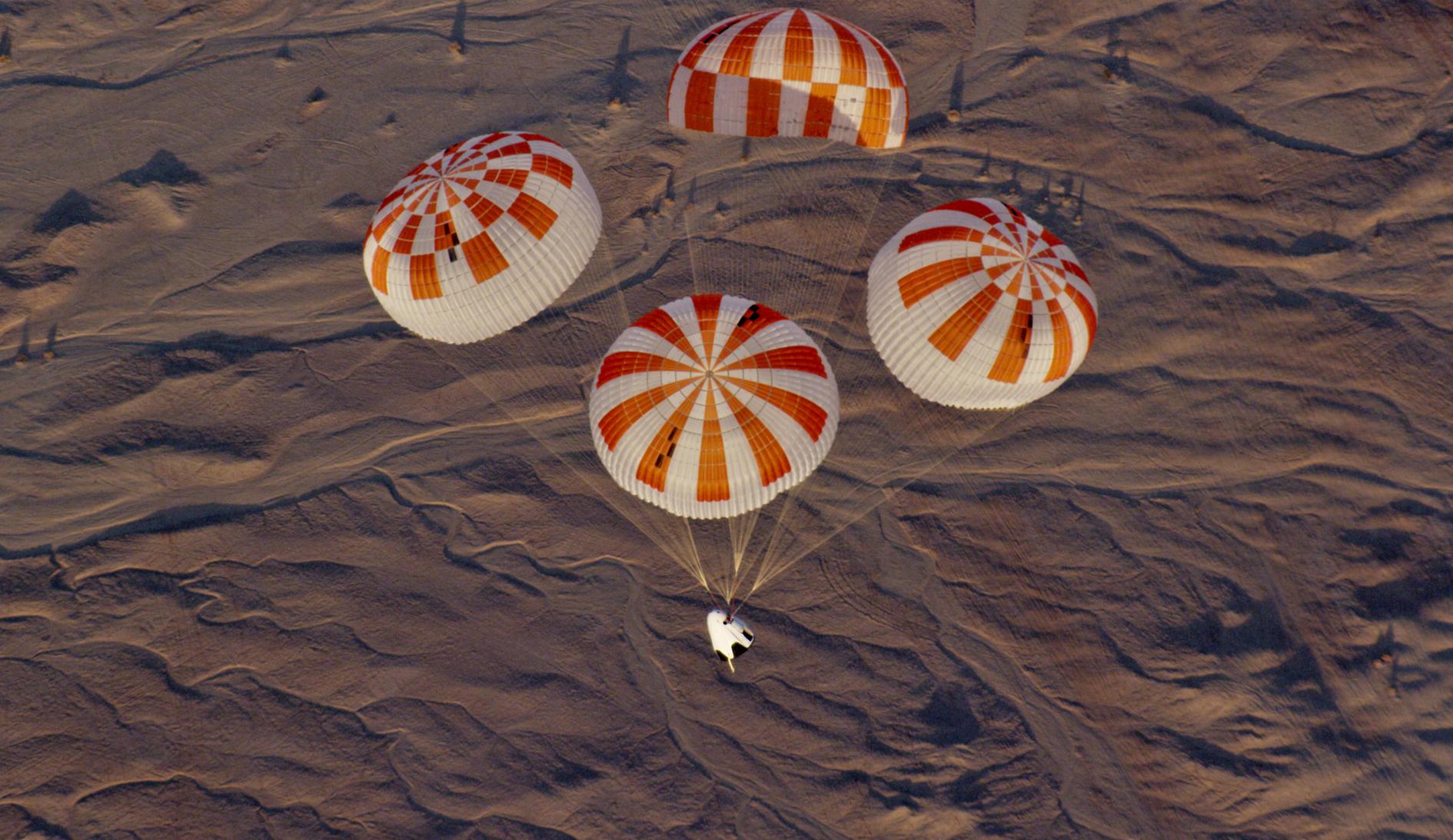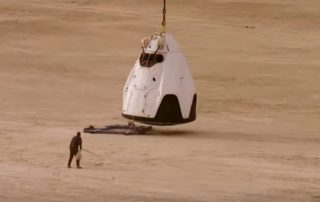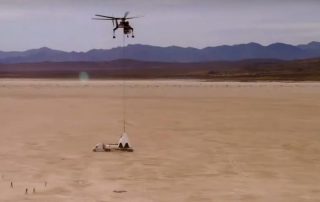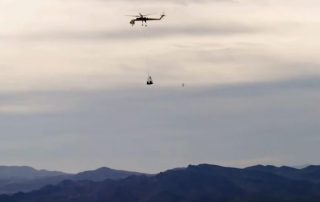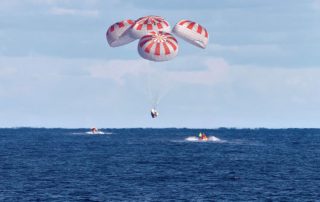SpaceX announced on March 24, 2020 that one of their final preparation tests with their Crew Dragon capsule’s parachute systems did not go as planned. The company and their test operators were forced to drop their Crew Dragon mockup capsule early during the test to protect the safety of the helicopter crew. Just to be clear, this was not a failure of the Crew Dragon capsule itself or its parachute systems.
“During a planned parachute drop test, the test article suspended underneath the helicopter became unstable. Out of an abundance of caution and to keep the helicopter crew safe, the pilot pulled the emergency release. As the helicopter was not yet at target conditions, the test article was not armed, and as such, the parachute system did not initiate the parachute deployment sequence. While the test article was lost, this was not a failure of the parachute system and most importantly no one was injured. NASA and SpaceX are working together to determine the testing plan going forward in advance of Crew Dragon’s second demonstration mission.”
SpaceX — March 24th, 2020
On March 24, 2020, SpaceX was preparing another test of its Crew Dragon parachute systems to certify the vehicle for crewed missions. Most of these final tests being performed are to test fringe events that are expected to be highly unusual, but still possible on a crewed landing attempt. These test cases likely include high stress loads to the parachutes than would otherwise be expected during a nominal landing.
To facilitate these tests, SpaceX often utilizes a very large helicopter to lift a mockup version of its Crew Dragon capsule to the altitude & speed needed for the day’s tests. These mockup capsules are uncrewed and are not fully functional spacecrafts. They’re essentially just mass simulators that represent the weight & aerodynamic shape of a Crew Dragon capsule while testing the performance of their parachutes.
During this particular test, the helicopter crew began to experience instability of some sort while ascending to their target altitude and the crew decided to drop the capsule early, out of an abundance of caution for crew safety. Unfortunately, the test vehicle was not ready for this drop and did not yet arm its parachute systems for the test so it descended unrestricted before crashing into the desert floor. The test vehicle was lost.
SpaceX and @NASA are targeting no earlier than mid-to-late May for Crew Dragon’s launch with two @NASA_Astronauts on board https://t.co/E1GUQvEnnf https://t.co/8O30eYD4vm
— SpaceX (@SpaceX) March 18, 2020
There’s no word from SpaceX on whether or not this test anomaly will result in delays to their upcoming planned launch with NASA astronauts Bob Behnken and Doug Hurley. Those two NASA astronauts are scheduled to be the first US astronauts to launch on an American made rocket from American soil since the end of the Space Shuttle program. Their upcoming mission, dubbed Demo-2 or DM-2, is tentatively scheduled for mid-to-late May 2020 as part of NASA’s Commercial Crew Program, but recent developments have caused some to question whether NASA and SpaceX will be able to hold that timeline. Today’s unfortunate anomaly should have a relatively small impact on the upcoming mission timeline, but couple that with the current outbreak of COVID-19 (Coronavirus) around the world and the engine failure that SpaceX experienced in their most recent Starlink V1.0-L5 mission; and a delay to the upcoming crewed mission wouldn’t be overly surprising.
#SpaceX lost an engine during today’s flight, failed to recover their booster, but successfully deployed all 60 #Starlink satellites & recovered their payload fairings!https://t.co/cjsq7X5e8E
— OLHZN Space Balloons 🎈🚀 (@OLHZN) March 18, 2020
SpaceX is currently performing an internal investigation alongside NASA to determine the root cause for the failure of one of their engines during the recent Starlink mission. This mission experienced the loss of one of the Falcon 9 booster’s nine first stage engines, but the mission was able to continue normally and successfully deliver its payload to the intended orbit without further issues. The booster flying the recent Starlink mission was flying for a fifth time after previously supporting four other satellite launches. This level of reuse is unprecedented in the orbital rocket industry so to die-hard SpaceX observers, an issue after battering this booster five times, wasn’t cause for much concern as it seemed within reason after so much use. Nonetheless, losing an engine isn’t something anyone wants to see happen on any flight, especially one with crew on board so SpaceX and NASA will be investigating to determine the cause of this anomaly too. SpaceX’s Commercial Crew Program contract requires that all internal investigations be closed prior to launching any commercial crew astronauts so this too could add to the DM-2 timeline. There’s still plenty of time for SpaceX and NASA to complete those investigations so it’s possible that mid-to-late May 2020 is still a reasonable timeline for launching the DM-2 mission in which case the current Coronavirus pandemic may be the biggest factor to watch over the coming weeks.
Interesting times as we continue preparations for the @NASA/@SpaceX Demo-2 flight test. Balancing risk of infection with training, vehicle processing, and readiness assessments. https://t.co/WtYSKltWit
— Bob Behnken (@AstroBehnken) March 27, 2020
In the meantime, NASA astronauts Bob Behnken and Doug Hurley are continuing with preparations for the DM-2 mission, although balancing the current public health risk is likely proving tricky for everyone involved with training, vehicle processing and overall readiness assessments as the mission creeps closer day by day.

